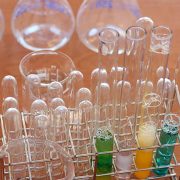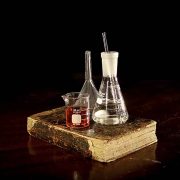Before entering the lab, acquaintances used to be the same as chemical laboratory equipment and the following functions
Chemical laboratories are indeed a place full of various special tools used to conduct research or experiments using chemicals, so getting to know the chemical laboratory tools and their functions can be done before entering the lab. Each tool must have its own characteristics and functions that you must learn together. That way it will be right to utilize its functions more optimally.
There are various kinds of chemical laboratory equipment and their functions which are very important to be considered well.
The following are various kinds of chemical laboratory equipment and their functions
Reaction Tubes and Shelves
Test tubes are used to make reactions for liquid types because they do not have a lid so a test tube rack is provided that will make it safe when in use will not fall or even spill.
Tripod
In some research needs, if there is a substance that needs to be heated, this third leg can function as a buffer so you don’t need to be confused when the heating process is taking place.
Erlenmeyer tube
This tube is also used to react to a substance or liquid that is made smaller at the bottom so that it will be very suitable to be used to store the solution so it does not spill even if it is being shaken because some substances do have to be shaken first to mix it.
Hood
This is a special cupboard used for storing acidic solutions. You can easily enter it after the tool button is turned on. The door of this cabinet should only be opened half of the body and make sure you use a mask and gloves when opening this cupboard for personal safety.
Centrifuge
This tool is used to easily separate or precipitate a solution. All you have to do is insert the tube into the device and it will immediately precipitate or separate the solid from the solution that was put into it. So you can do work while waiting for the results of this tool which is quite practical to use.
Balance
Of course you have often heard the word balance sheet or other words such as the scales. This tool is indeed used to weigh the substances needed for further lab processes. But before using it, you must ensure that the balance sheet is stable. After the button is turned on, you must provide a base before weighing. You should also pay close attention to the maximum and minimum limits that can be weighed using this balance sheet.
Laboratory Equipment With Electric Use
There are some things that you should pay close attention to when using various laboratory equipment especially those that use electricity sources. Here are a few notes:
- You must know the function and how to work the tool well so as not to cause errors that can be dangerous
- Reading the instructions for using the tools and practical guidelines is very important to do
- Equipment must be kept away from water sources to avoid other risks. Ensure that the position is quite comfortable to use and fit the condition of the device itself
- Check carefully the completeness of the equipment is installed properly and correctly so that its function can be optimal and not easily damaged considering the price is not cheap to buy
No need to worry because every tool must be equipped with instructions for use, so all you have to do is check it and learn first. Therefore, getting to know in more detail about the chemical laboratory equipment and its functions is very important.






 WhatsApp us Now
WhatsApp us Now